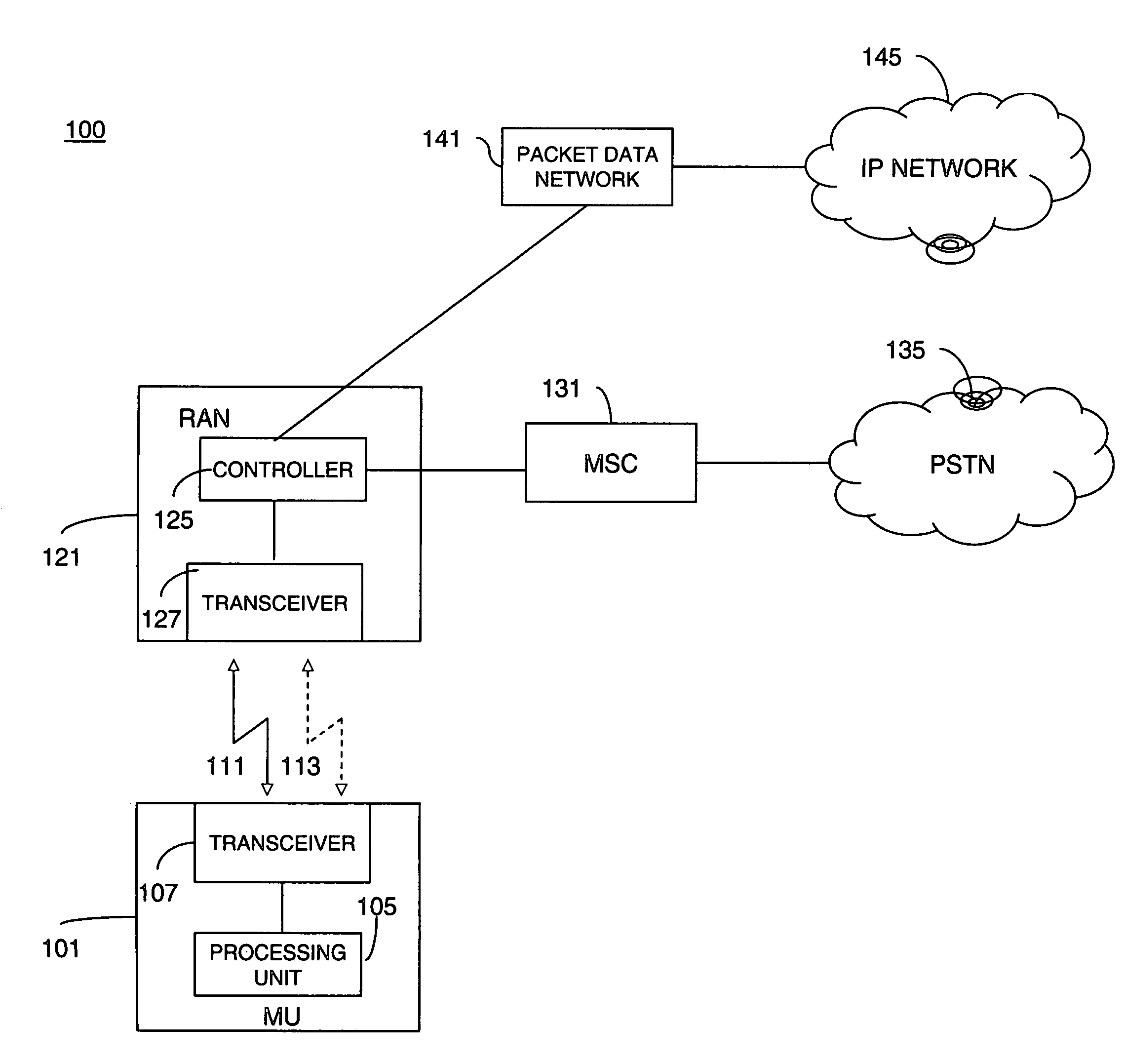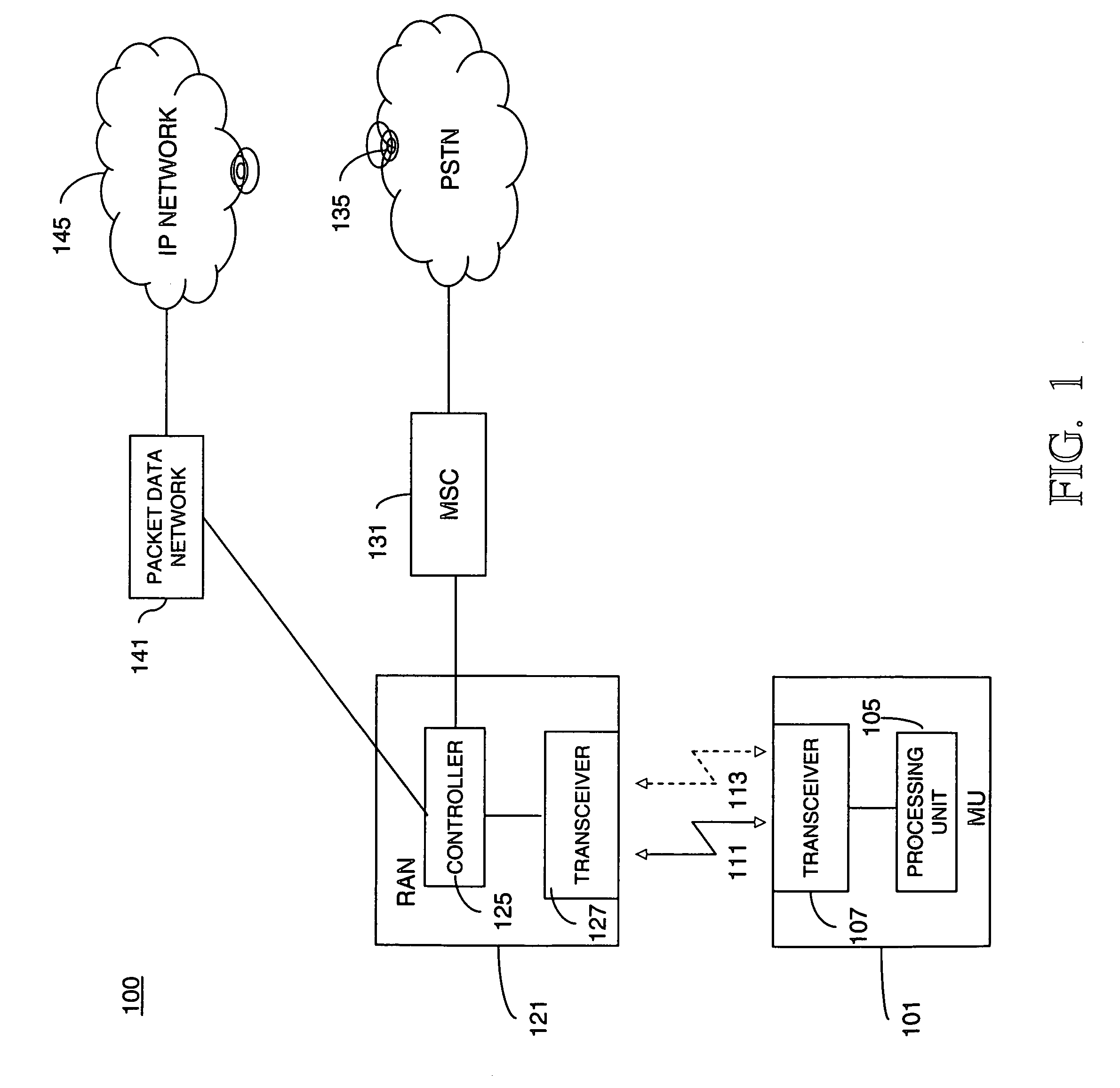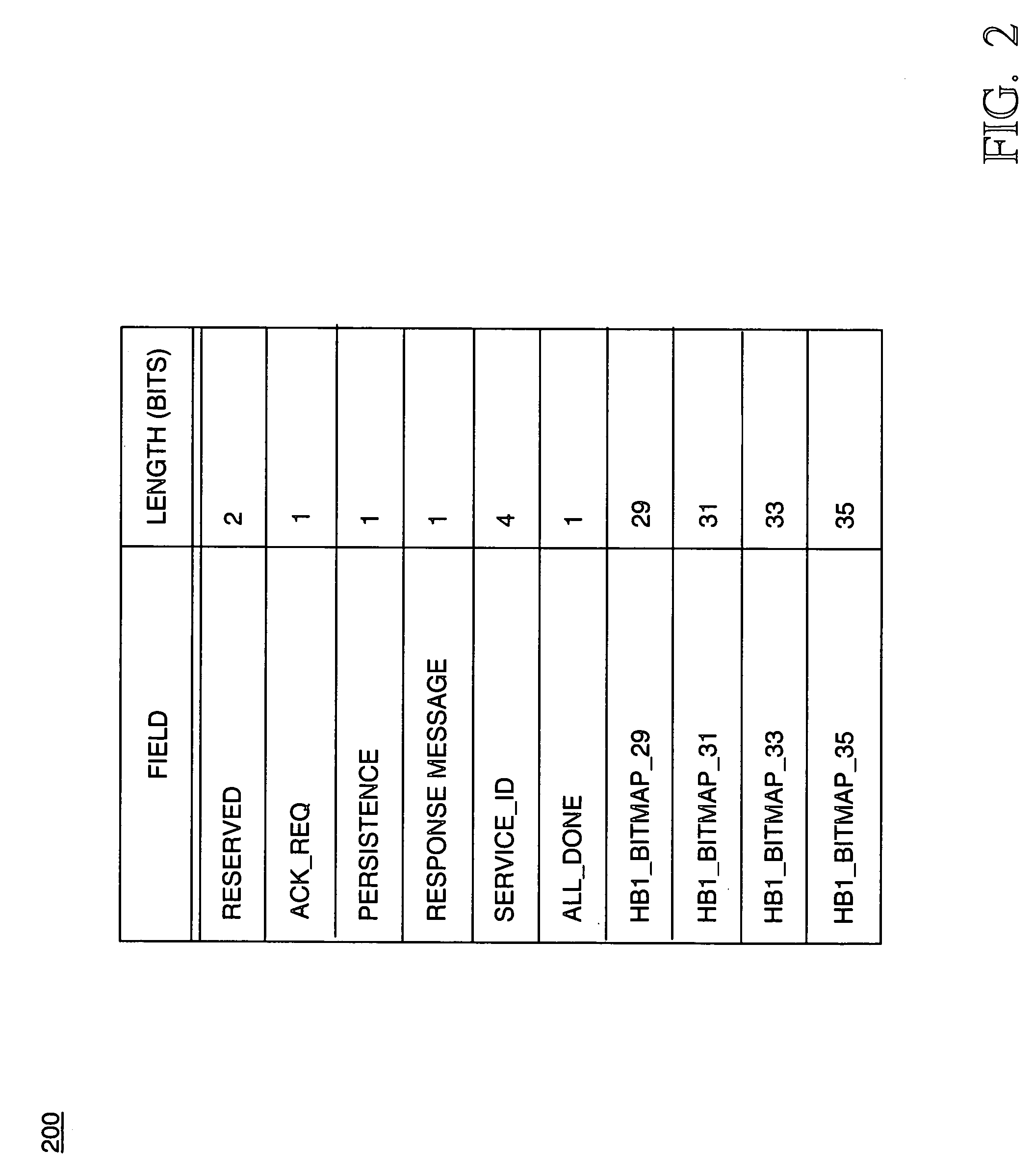Method and apparatus for signaling ad-hoc group of mobile units
a mobile unit and ad-hoc technology, applied in the field of communication systems, can solve the problems of consuming a large part of pch bandwidth, affecting battery life and reliability, and affecting the latency, battery life and reliability of the device,
- Summary
- Abstract
- Description
- Claims
- Application Information
AI Technical Summary
Benefits of technology
Problems solved by technology
Method used
Image
Examples
Embodiment Construction
[0010]Various embodiments are described for signaling an ad-hoc group of mobile units (MUs). The ad-hoc group may merely be a group of MUs for which signaling awaits transmission via a wireless communication resource. Signaling such a group involves deriving a mobile unit group identifier (MUGI) by combining individual mobile unit identifiers (MUIs) of the targeted ad-hoc group. The individual MUIs are either an identifier of each MU or derived from an identifier of each MU. The derived MUGI is then included in combined signaling that is transmitted via the wireless communication resource. A receiving MU determines whether the MUGI could have been derived from its MUI in combination with at least one other MU's MUI. When it determines that the MUGI could have been derived from its MUI, the receiving MU processes the signaling as directed to itself.
[0011]The disclosed embodiments can be more fully understood with reference to FIGS. 1-4. FIG. 1 is a block diagram depiction of a wirele...
PUM
 Login to View More
Login to View More Abstract
Description
Claims
Application Information
 Login to View More
Login to View More - R&D
- Intellectual Property
- Life Sciences
- Materials
- Tech Scout
- Unparalleled Data Quality
- Higher Quality Content
- 60% Fewer Hallucinations
Browse by: Latest US Patents, China's latest patents, Technical Efficacy Thesaurus, Application Domain, Technology Topic, Popular Technical Reports.
© 2025 PatSnap. All rights reserved.Legal|Privacy policy|Modern Slavery Act Transparency Statement|Sitemap|About US| Contact US: help@patsnap.com



